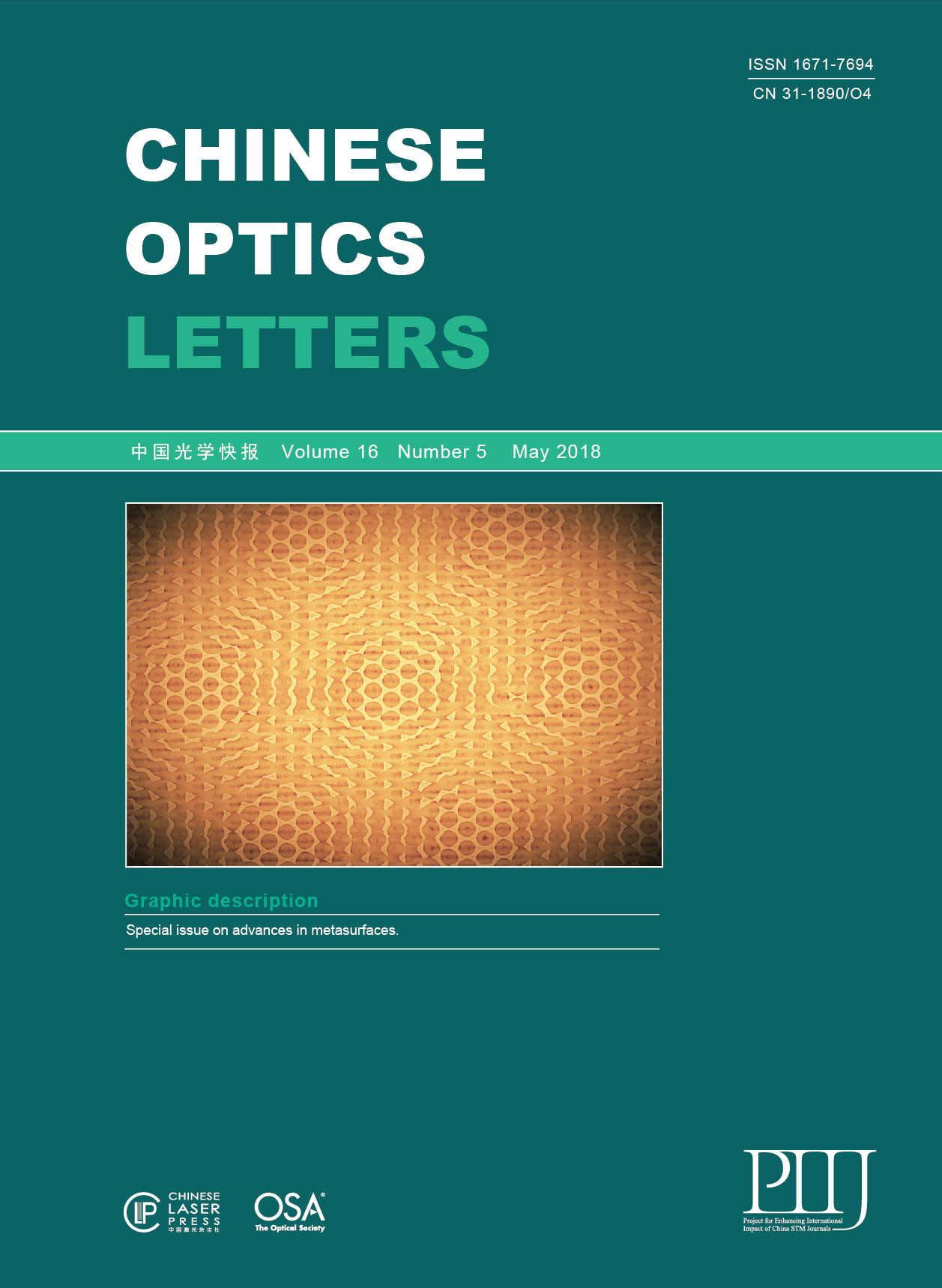Journals >Chinese Optics Letters
Metasurface refers to a type of artificial thin film materials with sub-wavelength features that can generate the desired and/or new optical phenomena. The past decade has witnessed significant advances in the metasurface, ranging from fundamental physics to nanomanufacturing methods and practical applications. Typical research efforts include wave-front engineering and detection [e.g., Yu, Science
- Publication Date: May. 10, 2018
- Vol. 16, Issue 5, 050001 (2018)
- Publication Date: May. 10, 2018
- Vol. 16, Issue 5, 050002 (2018)
- Publication Date: May. 10, 2018
- Vol. 16, Issue 5, 050003 (2018)
- Publication Date: May. 10, 2018
- Vol. 16, Issue 5, 050004 (2018)
- Publication Date: May. 10, 2018
- Vol. 16, Issue 5, 050005 (2018)
- Publication Date: May. 10, 2018
- Vol. 16, Issue 5, 050006 (2018)
- Publication Date: May. 10, 2018
- Vol. 16, Issue 5, 050007 (2018)
- Publication Date: May. 10, 2018
- Vol. 16, Issue 5, 050008 (2018)
- Publication Date: May. 10, 2018
- Vol. 16, Issue 5, 050009 (2018)
- Publication Date: May. 10, 2018
- Vol. 16, Issue 5, 052501 (2018)
- Publication Date: May. 10, 2018
- Vol. 16, Issue 5, 050101 (2018)
- Publication Date: May. 10, 2018
- Vol. 16, Issue 5, 050201 (2018)
- Publication Date: May. 10, 2018
- Vol. 16, Issue 5, 051301 (2018)
- Publication Date: May. 10, 2018
- Vol. 16, Issue 5, 051401 (2018)
- Publication Date: May. 10, 2018
- Vol. 16, Issue 5, 051402 (2018)
- Publication Date: May. 10, 2018
- Vol. 16, Issue 5, 051601 (2018)
- Publication Date: May. 10, 2018
- Vol. 16, Issue 5, 053501 (2018)
- Publication Date: May. 10, 2018
- Vol. 16, Issue 5, 052701 (2018)
- Publication Date: May. 10, 2018
- Vol. 16, Issue 5, 053201 (2018)
- Publication Date: May. 10, 2018
- Vol. 16, Issue 5, 053301 (2018)





















